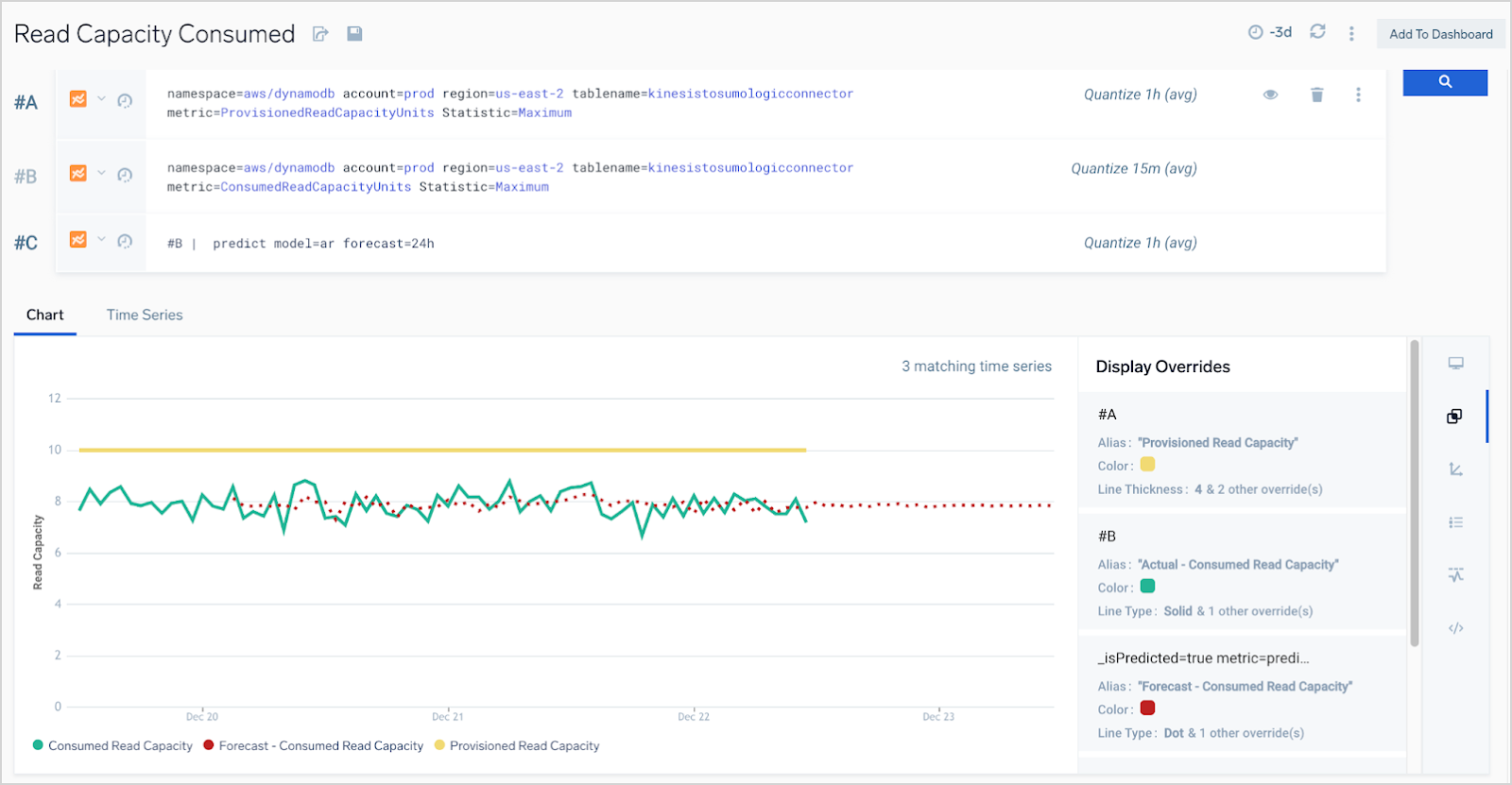
Get the report
MoreApril 17, 2023

Nothing is certain in this world except for death, taxes, and that you will eventually run out of disk space.
You may have used our unique predict operator to query logs and forecast future values (we’ve even heard of customers predicting their ingest volume for Sumo Logic log data to better forecast their usage and budget!) — and wanted to do the same with metrics.
With the recent general availability of the predict for metrics operator, you can. This metrics forecast query can help you preempt bottlenecks and assist with capacity planning.
Teams like yours use Sumo Logic dashboards to monitor service usage and prepare for capacity conversations with their cloud vendors. You can easily track errors, understand their context, and set alerts for when they’re going above certain thresholds.
Our predict for metrics operator can enhance this workflow.
For example, take the common use case of monitoring Amazon DynamoDB performance. While AWS infrastructure does much of the heavy lifting to support DynamoDB, teams often track how they’re using the service to ensure optimal performance — focusing on if their requests are being throttled and if they’ve exceeded their allotted capacity.
With the predict for metrics operator, you create a quick query in the metrics explorer to see if you have sufficient DynamoDB read capacity to support your expected consumption. And remember, you can even run queries, including this predict for metrics operator, on metrics pulled from logs.

In the above example, Series B provides the input for the actual Read Capacity Consumed time series. Series C [ #B | predict model=ar forecast=24h ] takes Series B as an input to forecast 24 hours into the future using an auto-regression model. In addition to the auto-regression model, the predict operator supports a linear model.
The red dotted line represents the forecasted consumption over 24 hours versus the actual consumption in green. The results suggest that the user is not expected to exceed their provisioned capacity during the applied time period.
Modern observability demands rich analytics for your telemetry. With predict operators available to query both logs and metrics, the Sumo Logic platform is uniquely equipped to help your teams anticipate and avoid what otherwise may seem inevitable (except, unfortunately, for death and taxes). If you want to get started with the predict for metrics operator and need more information, please consult our technical documentation.
Reduce downtime and move from reactive to proactive monitoring.
Build, run, and secure modern applications and cloud infrastructures.
Start free trial